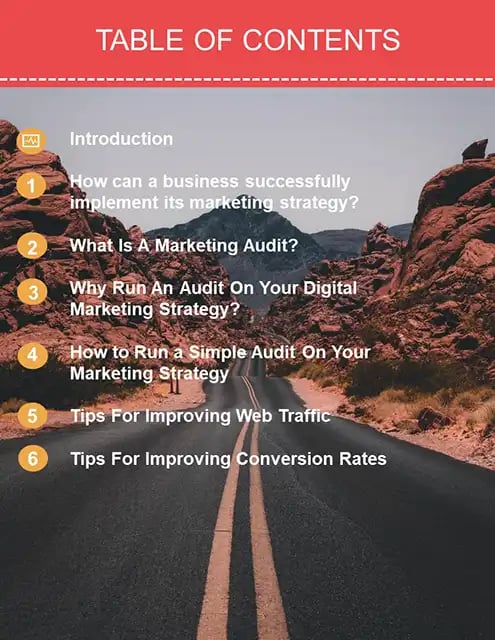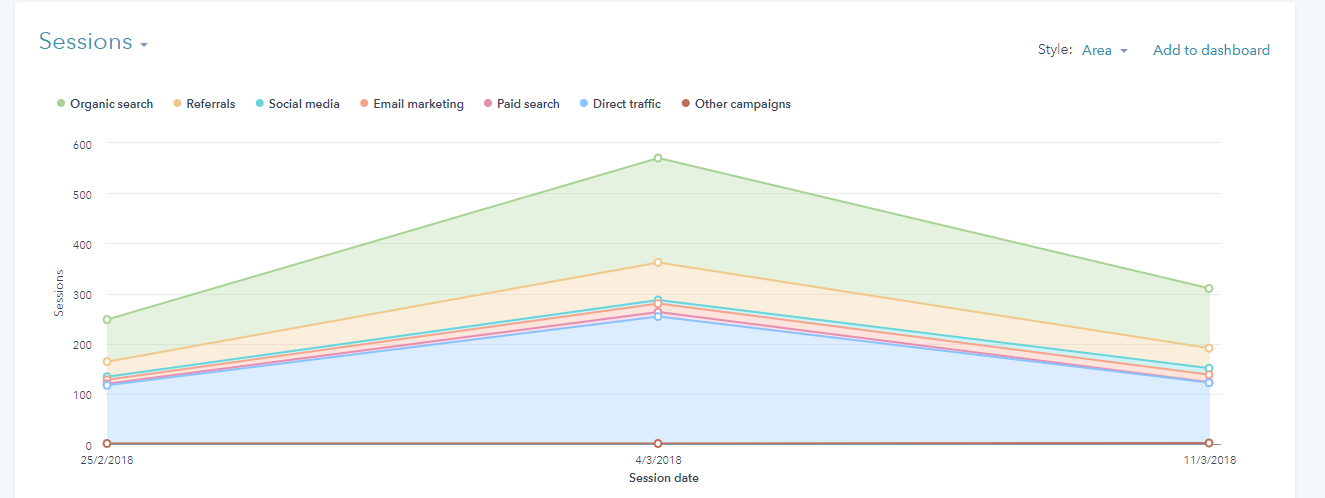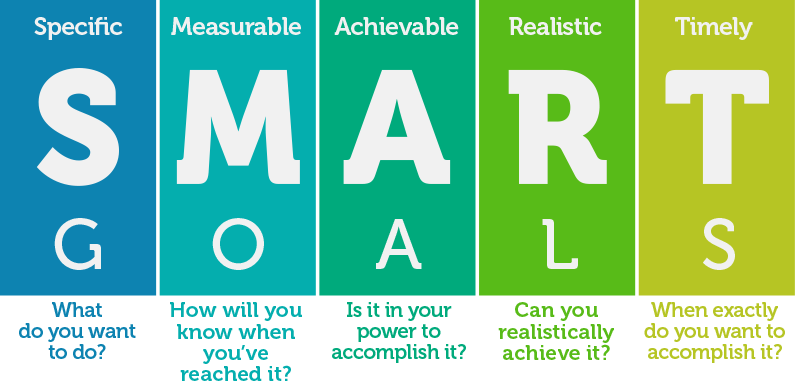How To Fix The Gaps In Your Marketing Strategy?
- Home
- How To Fix The Gaps In Your Marketing Strategy?
Looking for a way to fix the gaps in your marketing strategy through a simple audit?
The world of digital marketing is getting more challenging day in and day out. In the race to get ahead of their competition through online marketing, companies and brands create viable marketing strategies that would achieve their marketing goals and be effective in the long run.
But staying ahead of their competition is not as easy as it seems. It needs time investment, continuous efforts and implementation of a variety of marketing strategies that work.
You can download this article as an eBook here.

Marketing strategy is an important tool that can help brands and businesses stay ahead of their competition. But that's not all. To maintain a higher position in their niche, businesses need to put an equal amount of effort into maintaining their position. They need to update their marketing strategy, upgrade their skills and implement updated and viable strategies.

How can a business successfully implement its marketing strategy?
To ensure your marketing strategy is successful for your business in the future, you need to first run an audit on your current digital marketing strategy. Auditing your marketing strategy regularly will help you find out what changes you need to make in your strategy and what actions you need to retain your lead.
Devising a marketing plan without first performing a thorough digital marketing audit will lead you to invest in unnecessary initiatives and overlook gaps in your current marketing strategy. Many traditional marketers avoid performing an in-depth audit because it is a very time-consuming and often intimidating process.
Have you ever run a marketing campaign that did not achieve its goal? No doubt, it would have left you frustrated for some time. But would you like to look into the causes, or find out where your campaign fell short? Most of the time, marketers do not understand what part of their marketing is not generating desired results, but they are just not sure about it.
Marketers can easily find out which parts of their marketing strategy are not working or generating results as expected. Marketers can find that out using HubSpot analytics tools and run a simple audit. An audit can easily identify all the areas in your marketing strategy that are performing strongly, as well as those areas that immediate improvement to achieve desired results.

What Is A Marketing Audit?
A marketing audit is defined as a high-level review of your overall website traffic and the conversion rates it receives. The goal of a marketing audit is to find the area or areas in your marketing strategy that you could improve on to convert more traffic and generate more leads. In other words, a simple marketing audit helps you locate the marketing gaps in your strategy.
In addition to identifying the marketing gaps in your strategy, a simple marketing audit can also show you whether your recent marketing campaign was able to achieve the expected results or not. It can also answer tough and intangible questions put forward by your CEO, such as, "How can we attract more leads without spending huge amounts of money?"
Below we take a detailed look at why marketers should always audit their digital marketing strategy.
Why Run An Audit On Your Digital Marketing Strategy?
Marketers could conduct an audit on their digital marketing strategy audit for a variety of reasons. Some of the reasons are listed below:
- Marketing strategy is not producing results as expected
- Website Traffic is gradually decreasing or remains unstable
- The strategy is not achieving sales target and requires an immediate upgrade
- The paid marketing budget is much higher than sales whereas the opposite is required, i.e. increase in sales with less budget
If your marketing strategy is not performing well; you want to achieve your marketing goals and also get rid of all of the issues mentioned above, you need to perform a thorough Digital Marketing Audit to determine the actionable strategies and stats to fix them.
You can download this article as an eBook here.
How to Run a Simple Audit On Your Marketing Strategy
- Start by Gathering the Right Data
The very first step for marketers is to collect the data. If you are using the HubSpot tool, you will have all the data stored for you already and all you need to do is run an audit using your HubSpot portal. The following are the specific tools that will be required to run an audit:
- Dashboard - The HubSpot dashboard provides you with a high-level and detailed summary of the overall health of your marketing campaign.
- Sources - Here you will find a very detailed breakdown of where all the traffic and leads to your website are coming from.
- Landing Page Analytics - This tool shows you how often and how quickly your landing pages are converting your visitors into leads.
- Interpret The Data In Detail
This is a very crucial step because when you dig into the accumulated data, it can reveal the effectiveness of your digital marketing strategy. Let's start with the average monthly traffic data your website receives.
Part 1: Analyse and Interpret Website TrafficThe first step is to carefully analyse the traffic or number of visits your website has received this month. Are you getting enough traffic as you expected? Or is it nowhere close to what you had planned for this month?
When you audit the traffic on your website, you will have to dig a little deeper and evaluate the traffic that you have attracted over one year or more. Then compare it with your current traffic and find out the cause.
Is the current traffic on your website consistent, or are you seeing a sudden decline or increase in traffic? An audit will help you get your web traffic stats into perspective, by taking a closer look at the Sources tool.

When you start with your Sources tool, you will find several ways that will help you put the current traffic on your website into perspective:
Traffic trends - Take a closer look at the web traffic over the past year or two by toggling the dates displayed at the top of your Sources tool, here you can easily compare your current traffic web to that of previous months, as well as, previous years. Analysing web traffic over the years will help you identify traffic trends.
Dig into the Source - It is very important to look at the source from where your website is attracting the majority of the traffic. By taking a look at where the traffic is coming from you will be able to see the traffic trends. Do you find any sources becoming stronger or weaker over some time? There are three main sources that you should always look at very carefully when analysing web traffic, and they are:
- Organic search
- Social Media
- Referral
These sources are hardest to achieve but they are also directly related to your funnel marketing efforts.
Make sure you dig deep and are willing to dive into all the historical traffic data and find out anything worth noting. You should note if there was a time when the traffic was particularly high on your website. Dig in deeper and see what had caused this spike.
Find out if the traffic from that particular source has been steadily decreasing from the time it went up? What strategy were you following during that time that attracted so much traffic? This is the time to figure out the source and also put more focus on those tools that affect the source.
Recommended Action
- Analyse the number of visits your website received this month
- Identify traffic trends and the source where your traffic comes from
Part 2: Analyse and Interpret The Performance of Your Lead Conversion
A marketing audit also requires you to carefully interpret the lead conversion data. This can be done by looking at 3 key reports which will not only shed light on the performance of your lead conversion but also help you find out what clicked.
The first step is to get back to your HubSpot dashboard and focus on the lead conversion rate of your website which appears in the grey box. This is the total percentage of visitors on your website that have become leads in the HubSpot contact database.
To fully understand what conversion rate means, you need to go to your Sources tool.
Try the same method that you used to find out the traffic data in the sources tool.
Toggle the date range in your Sources tool and retrieve the traffic your website has received over a long period. Once you have the data, check the box at the top of the graph, this will show you the current visits-to-contacts rate.
This action will show you how well you have been able to convert your traffic into successful business leads over some time. You can also spot trends and find out the sources.
Find out when the conversion rate was steadily increasing, and whether there was a particular day, week or month the conversion was particularly high. By looking at these trends and data, you will be able to uncover numerous ways to increase your conversion rate once again.
But it is important to note here that the conversion rates you are seeing in the Sources tool are the result of conversion efforts you have made over a long period.
If you are interested in finding out what specifically drove lead conversions during a particular month, you need to go to your landing pages tool.
When you open your landing pages tool, you can quickly dive in and view how each of your landing pages has contributed to the overall conversion rate. You can also sort your landing pages by submission rate, views, new contacts rate, etc. and carefully observe the impact every single of your landing pages has made.
Do you notice a page that has performed exceptionally or a page that has performed even lower than your expectations? Find out the reason.
If you want to calculate the conversion rate of all landing page conversions, just click on the Export button on the bottom right-hand side of your screen. This will automatically download all the data on your computer with an Excel sheet.
Recommended Action
- Focus on the lead conversion rate of your website
- Use the sources tool to find out when the conversion rate steadily increased
- Analyse the impact your landing pages have made
Part 3: Identify Marketing Gaps In Your Strategy
By this time you have conducted an in-depth study of your previous marketing efforts by interpreting the marketing data from HubSpot, it is now time to identify all the gaps that are present in your marketing strategy.
The very first step is to figure out whether there is a gap in your marketing strategy, website traffic or lead conversion rate or not. To do that, you should know if your website can convert a healthy percentage of your web traffic into leads.
But it is very important to keep in mind that your estimate for a healthy conversion rate greatly depends on the customer personas, your industry and most importantly, the product or service you are providing.
But the general benchmark, or the average traffic-to-lead conversion rate among HubSpot users is around 0.93%. This simply means that for every 100 people who visit a website, one person will convert into a lead.
Through this, you can find out where your website stands. By comparing the conversion rates you will be able to see how your website is performing and whether your it is good enough to convert a healthy percentage of your overall traffic.
In case your website is not converting any traffic at all, you should immediately start working on increasing your website traffic, to grow the total number of leads. But if your website is performing well and you find an improvement in your lead conversion rate you should try your best to maintain it and keep working on improving your marketing strategy.
This step is very important in your auditing journey because it helps you determine whether your conversion rates are good enough or not. Having a healthy conversion rate is crucial to your website and if it is not healthy, the outcome indicates that there is a gap in your marketing strategy. Once you have spotted this gap, the next step is to decide how to fix that gap as soon as possible and that takes us to the next step.
Recommended Action
- Figure out if there is a gap in your marketing strategy
- Are you achieving the general traffic-to-lead rate?
- If your website is not converting any traffic start working on it immediately
Part 4: Devise A Plan to Fill The Gap and Improve Your Marketing Results
After analysing and interpreting all the data that you have gathered, and also identifying all the gaps that are present in your marketing strategy, it is time for you to take action.
The very first thing you need to do is create a SMART (Specific, Measurable, Attainable, Relevant, Timely) goal that focuses on either increasing your traffic or the conversion rate, whichever you have identified as a marketing gap.

For instance, you can create a SMART goal like this: The objective is to improve Q3 website traffic by 30% in Q4.
This particular goal is very specific and to the point, because it carefully focuses on one segment of marketing strategy, it is also measurable by using HubSpot and also attainable by the implementation of SEO techniques and content optimization. It is relevant in its relation to the current marketing gap, and also timely because it includes a pre-defined time frame for completion.
Thoroughly review your marketing performance in the last month or past 6 months and set a goal that is focused on improving your most recent results. You can also set a revenue target if you like to stay on track. Using HubSpot will enable you to pick up your goal and add it to the Goals tool on your HubSpot Dashboard. It will serve as a reminder and will motivate you to achieve your goal daily.
Below are a few tips and suggestions to reach your goal faster:
You can download this article as an eBook here.
Tips For Improving Web Traffic
- Blog more often. You can use HubSpot's free blog topic generator and get started with blogging instantly.
- Promote yourself on social media. Use an editorial calendar to plan your social media posts.
- Track and optimize your website for all relevant long-tailed keywords.
Tips For Improving Conversion Rates
- Make sure to add CTAs to the top 5 most visited pages on your website.
- Always optimize thank you pages to attract additional conversions.
- Do not forget to conduct an A/B test on your landing pages.
By following these simple tips and tactics you will not only fill the gaps in your marketing strategy but also improve your website performance a great deal. But remember, whatever tactic you implement, keep monitoring its performance and see how it is affecting web traffic or conversion rate, whichever you need more.
A thorough and effective marketing audit can improve your website performance and help you achieve your target. Make it your habit to regularly improve your digital marketing strategies and upgrade them every month. Having an effective digital marketing strategy is the key to building a high-performing successful business that promises to reach a new milestone every year.
Recommended Action
- Create a SMART goal concerning your marketing gap
- Review your marketing performance in the last few months and set a goal

